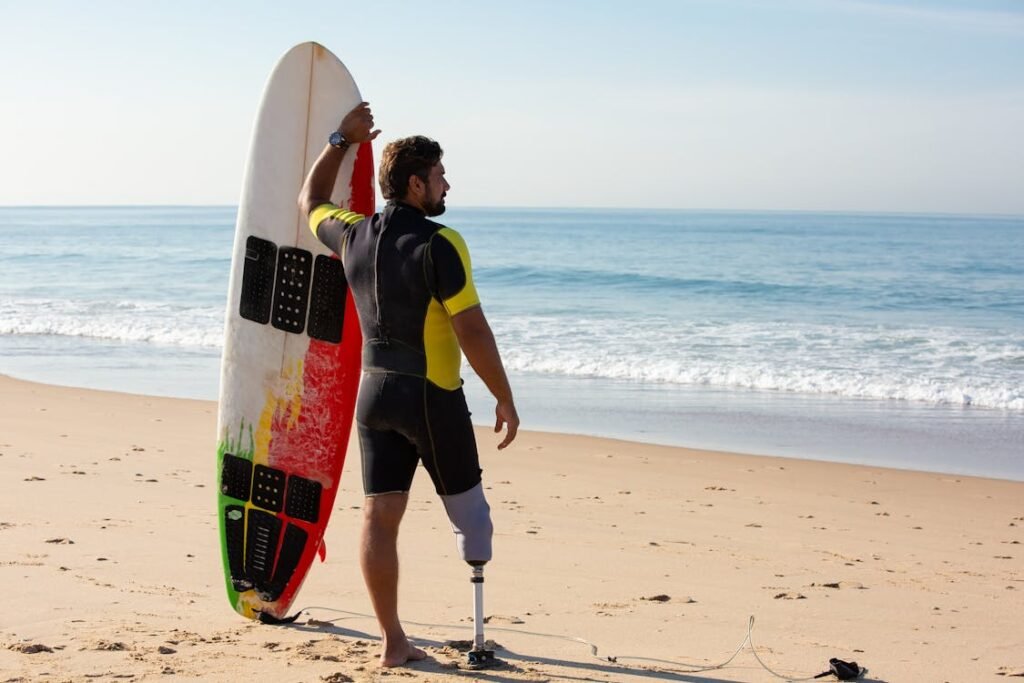Walking long distances can be a wonderful way to stay healthy, enjoy nature, or simply move from one place to another without stress. But many people struggle with lasting energy or feel discomfort after walking for too long. Sometimes, one leg might feel stronger than the other, or your body may feel out of balance. These are signs that your walking endurance and body symmetry need attention.
Improving endurance means helping your body keep going without getting tired too quickly. Boosting symmetry means making sure both sides of your body are working together smoothly. These two things are connected. If one side is weaker or moves differently, your body has to work harder, and you tire faster. On the other hand, when both sides are in sync, walking becomes easier and more enjoyable.
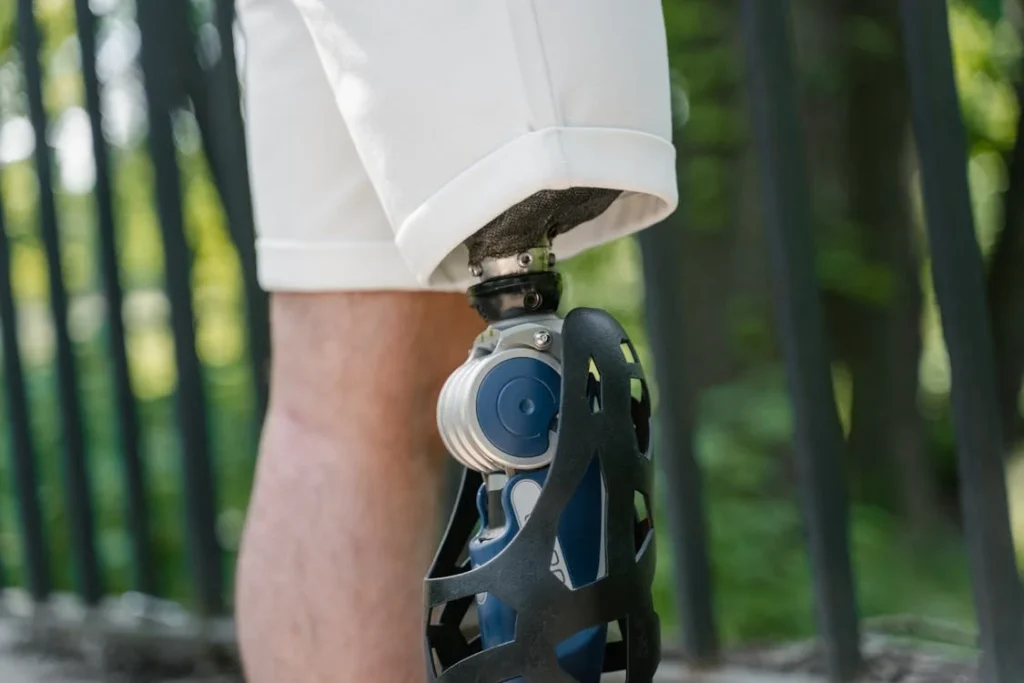
Understanding the Foundation of Walking Endurance and Symmetry
Walking is something most of us do without thinking. But underneath this simple motion is a complex coordination of muscles, bones, nerves, and joints. To improve both endurance and symmetry, you first need to understand how your body is working and where things may be going wrong. This section will guide you through the core elements that impact your walking ability.
Why Endurance and Symmetry Go Hand in Hand
When you walk, your body uses energy to move your legs, swing your arms, keep your head upright, and balance your weight from side to side. If one part of your body isn’t moving in sync with the others — even a small difference in how one foot lands — your muscles have to work harder to make up for it. That burns more energy and tires you out faster. Over time, it can also cause discomfort, pain, or even injury.
So, when we talk about improving walking endurance, it’s not just about training your heart or building stronger legs. It’s about making sure your whole body is doing its job evenly. That’s where symmetry comes in. When your body is symmetrical during movement, the effort is shared equally, reducing strain and allowing you to walk longer without feeling exhausted.
The Role of Posture in Walking
Your posture sets the tone for how you move. Stand up straight with your shoulders relaxed and your head aligned with your spine. This simple position can instantly make walking easier. But many people slouch, lean forward, or let their hips roll too much when they walk, especially if they’re tired or distracted. Over time, these habits can weaken certain muscles and throw off your balance.
Start by becoming aware of how you stand and walk. Do you lean to one side? Does one foot turn out more than the other? Are your shoulders uneven? These small details can have a big impact on endurance. Correcting them might feel strange at first, but they’re worth paying attention to.
Muscle Imbalances: The Silent Problem
One of the main causes of poor walking symmetry is uneven muscle strength. You might have one leg that’s stronger than the other, or a hip that’s tighter, or a shoulder that always feels higher. These imbalances can be caused by many things — how you sit, past injuries, or even how you carry your bag.
If you always take the stairs leading with the same leg, or stand with your weight on one side, you’re training your body to rely more on that side. Over time, the stronger side keeps getting stronger, and the weaker side falls behind. This leads to poor coordination and more effort when walking, making you tire more quickly.
Strengthening your weaker side and increasing flexibility in tighter areas is one of the fastest ways to improve walking balance. We’ll get into exercises soon, but first it’s important to recognize that this is often a hidden issue — and fixing it can lead to noticeable improvements in your comfort and energy.
Prosthetics, Orthotics, and Assistive Devices
For people who use prosthetic limbs or braces, maintaining walking symmetry can be even more challenging. An uneven fit, a slight change in alignment, or even daily wear and tear can impact how you move. At Robobionics, we’ve seen how proper fitting and regular adjustment of prosthetic devices can completely change someone’s ability to walk further with less effort.
If you’re using any kind of assistive device and feel like walking is more tiring than it should be, it’s worth getting your equipment checked. Sometimes the problem isn’t in your body at all — it’s in how your device interacts with it. The right alignment can reduce energy use, support better posture, and give you the confidence to move more freely.
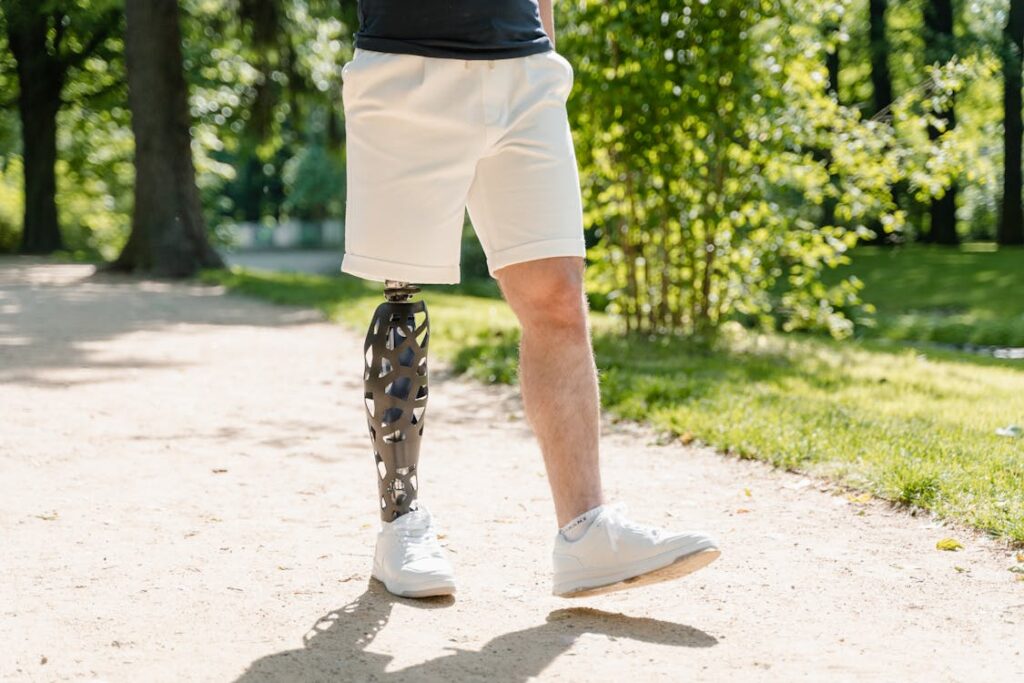
How to Build Better Endurance Step by Step
Now that you understand how symmetry and posture affect your endurance, let’s focus on how to actually build it. Endurance doesn’t come overnight. It grows slowly with small, repeated efforts. Think of it like charging a battery. The more you charge it, the longer it lasts. But if you forget to plug it in regularly, it drains out quickly.
Endurance training isn’t about pushing yourself until you’re exhausted. In fact, doing too much too soon can backfire. The goal is to increase how long and how well you can walk, without getting tired or feeling pain. That means consistency and patience are key.
Start With What You Can Handle Comfortably
Many people make the mistake of thinking they have to walk far to improve. That’s not true. You just need to walk regularly. Start with a distance or time that feels easy. It might be five minutes or it might be thirty. The key is that it should feel doable. You should finish with energy left over, not completely worn out.
Once that becomes easy, you can add a few more minutes or a few more steps. Increase slowly. Maybe just one minute more each week. That might seem like nothing, but over a month, that’s four extra minutes. In three months, you’ve added twelve. That’s how endurance grows — slowly, safely, and without injury.
Pace Matters More Than Speed
You don’t need to walk fast to improve endurance. In fact, walking too fast can cause strain and shorten your walk. Focus instead on finding a steady pace that allows you to breathe comfortably and maintain good posture. A gentle, even rhythm is what you want.
If you feel out of breath, slow down. If your legs feel heavy, stop and rest. You’re not training for a race. You’re building a strong, steady walking habit that can last a lifetime.
Break It Into Pieces
Long walks can feel overwhelming, especially if you’re trying to improve. Instead of one long walk, split it into two or three shorter ones across the day. This still helps you build endurance without overloading your muscles all at once.
For example, if 30 minutes is too much in one go, try 15 in the morning and 15 in the evening. Your body still gets the benefit, and it feels easier to manage. As your endurance builds, you can combine them into one walk later on.
Rest Is Part of Training
A common mistake people make when trying to improve is ignoring rest. Rest days are not lazy days — they’re part of the process. Your muscles need time to repair and get stronger. Without rest, they just get tired and weaker.
Plan rest days into your week. If you walk five days a week, take two days off. Or make one day a shorter, gentler walk. Listen to your body. If you feel drained or sore, it’s okay to pause. Rest allows progress. Without it, you only get burnout.
Fuel Your Body the Right Way
Endurance isn’t just about muscles. It’s also about energy. What you eat and drink affects how well you walk. Before walking, have a small snack that gives you lasting energy — something like a banana, a slice of toast, or a handful of nuts. Avoid heavy meals right before walking.
Stay hydrated. Even light dehydration can make you feel tired and slow. Drink water before and after your walk. If it’s a long walk or a hot day, sip water during the walk too. Don’t wait until you’re thirsty — by then, you’re already behind.
Use Your Arms to Help You Walk Better
Your arms play a bigger role in walking than most people realize. When your arms swing naturally, they help balance your steps and reduce pressure on your legs. They also help build rhythm and keep your upper body engaged, which spreads out the effort.
Keep your elbows slightly bent and swing your arms gently as you walk. Don’t stiffen them or let them hang loosely. A natural arm swing can make walking smoother and more efficient, helping you last longer without tiring.
Mind Your Breathing
Many people breathe shallowly while walking, especially if they’re focused on their steps. But deep, steady breathing helps your muscles get more oxygen. It also keeps your heart rate in control and helps your mind stay calm.
Practice breathing in through your nose and out through your mouth. Try to match your breath with your steps — for example, inhale for three steps and exhale for three. This creates a natural rhythm that supports both endurance and focus.
Train Your Core for Support
Your core — the muscles in your stomach, back, and hips — acts like the body’s central support system. A strong core helps you stay upright, maintain balance, and avoid fatigue. If your core is weak, other muscles have to work harder, and that burns energy fast.
You don’t need intense workouts to build your core. Simple exercises like gentle planks, sitting tall without leaning, or even walking while holding your stomach muscles slightly engaged can help. Over time, a stronger core makes walking feel easier and more stable.
Understand Your Gait (Your Walking Pattern)
Everyone walks differently, but some walking patterns can cause problems. For example, if your foot always lands unevenly or your knees turn in while you walk, that can waste energy and put pressure on your joints.
Pay attention to your steps. Do your feet point forward? Do your heels hit the ground first? Do your hips move smoothly? You don’t need to be perfect, but the more balanced your gait, the more energy you save. If something feels off, it might help to see a physical therapist or movement expert. They can spot small issues and help you correct them.
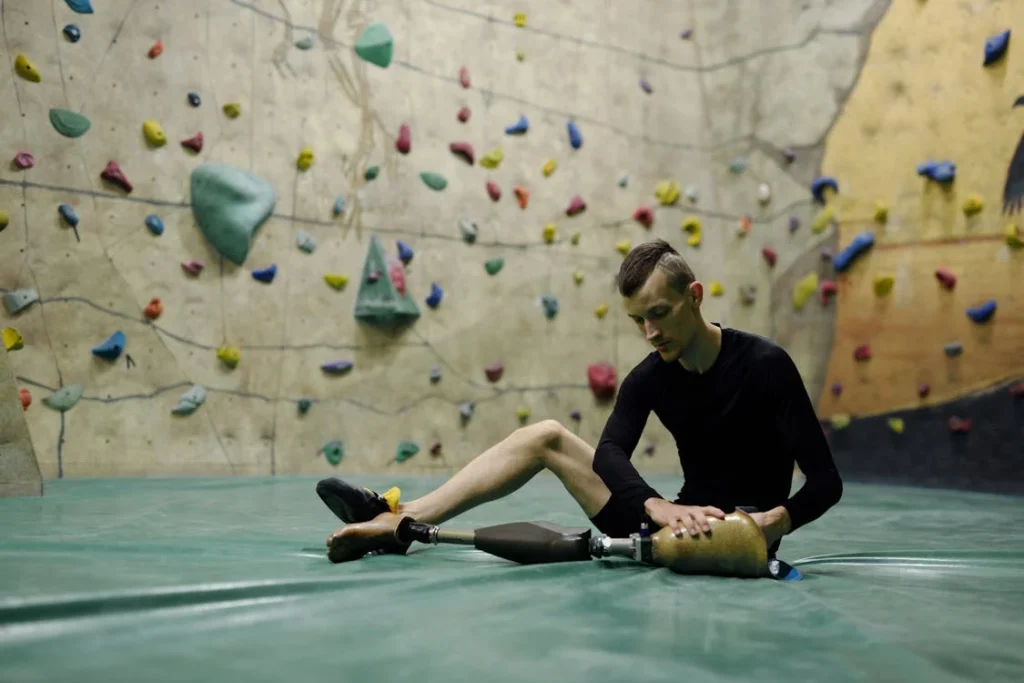
Correcting Common Mistakes That Drain Your Energy
As you walk more and work on building endurance, it’s important to be aware of habits that can quietly steal your energy and throw off your body’s natural rhythm. These aren’t always obvious, but over time, they add up — leading to fatigue, discomfort, and even injury. Fixing these habits is often a turning point for people who want to walk farther and feel better doing it.
Wearing the Wrong Shoes
Your shoes are your foundation. If they don’t support your feet properly, everything above them — ankles, knees, hips, even your back — will be affected. Walking in the wrong shoes can lead to joint pain, muscle tightness, or feeling tired much sooner than you should.
Choose shoes with enough cushioning to absorb shock, and firm support that holds your foot in place. Your toes should have room to move, but the shoe shouldn’t be loose. Avoid flat sandals, old sneakers, or shoes with uneven wear. If your shoes lean to one side, that could be a sign of poor gait or muscle imbalance — and it might be time for new ones.
Also, shoes wear out quietly. Even if they look fine, they may not be doing their job. As a general rule, replace walking shoes every 500–700 kilometers.
Ignoring Pain or Discomfort
Pain is your body’s way of sending a warning. A lot of people push through pain, thinking it’s just part of building endurance. That’s not true. There’s a difference between effort and damage. Sore muscles after a walk can be normal. But sharp pain, ongoing aches, or anything that feels “off” needs attention.
If one leg always hurts more, or your back feels tight after walking, don’t ignore it. Pain can be a sign of imbalance or poor form. Addressing it early is far easier than fixing an injury later. Stretch gently, use heat or cold packs, and if the pain returns often, get a professional opinion.
Holding Your Body Too Tightly
Some people walk with their shoulders tensed, their hands in tight fists, or their jaw clenched. This tension uses energy and blocks natural movement. It also makes breathing harder and can cause neck or shoulder pain.
Before and during a walk, do a quick body scan. Are your shoulders relaxed? Is your face soft? Are your hands open? Keep your body loose but upright. This doesn’t mean you should slump — you just want to move naturally without holding onto tension.
Carrying a Bag on One Shoulder
Many people carry bags, purses, or backpacks every day. But if you always carry weight on one side, it can twist your body and lead to muscle imbalances. This shows up most clearly during longer walks when your back or hip starts to ache.
If you need to carry something, try using a backpack with both straps. If that’s not possible, switch sides often. Keeping your load light and balanced can make a big difference in how long you can walk comfortably.
Trying to Walk Like Someone Else
It’s easy to compare yourself to others. Maybe you walk slower than your friend or feel clumsy next to someone with a smooth stride. But copying someone else’s walk usually doesn’t help — it can make you feel worse.
Your walk is your own. It’s shaped by your body, your strength, and your experience. Instead of trying to match someone else’s pace or style, focus on improving your own. Be mindful, stay relaxed, and notice what feels good for you. Small adjustments that feel natural will help far more than trying to “look right.”
Not Warming Up or Cooling Down
Even though walking seems simple, it still puts stress on your muscles and joints. A short warm-up prepares your body to move well. A cool-down helps your body recover and prevents stiffness.
Before walking, spend a minute or two standing tall and swinging your legs gently. Rotate your ankles and roll your shoulders. After walking, slow your pace for a few minutes, then stretch your calves, thighs, and hips. These steps don’t take long, but they can greatly improve how you feel afterward.
Missing the Mental Side of Endurance
Walking isn’t just physical. Your mind plays a big role. If you’re distracted, bored, or stressed while walking, your body won’t move as smoothly. You may clench your jaw, breathe shallowly, or hold tension in your back.
Build a simple walking ritual that feels calming. It could be listening to music, focusing on your breath, or walking in a place that lifts your mood. A peaceful mind makes walking easier. And when your mind and body work together, you’ll walk longer without even noticing the time.
Not Being Consistent
Endurance is not built in a week. If you walk once and wait a few days, your body loses progress. But if you walk most days — even for just a little while — the improvement adds up.
Make walking part of your routine. Attach it to something you already do, like taking a walk after breakfast or before sunset. The more regular your walks, the easier they become. Think of walking not as a workout, but as a gift to your body — something you do because it feels good, not because you have to.
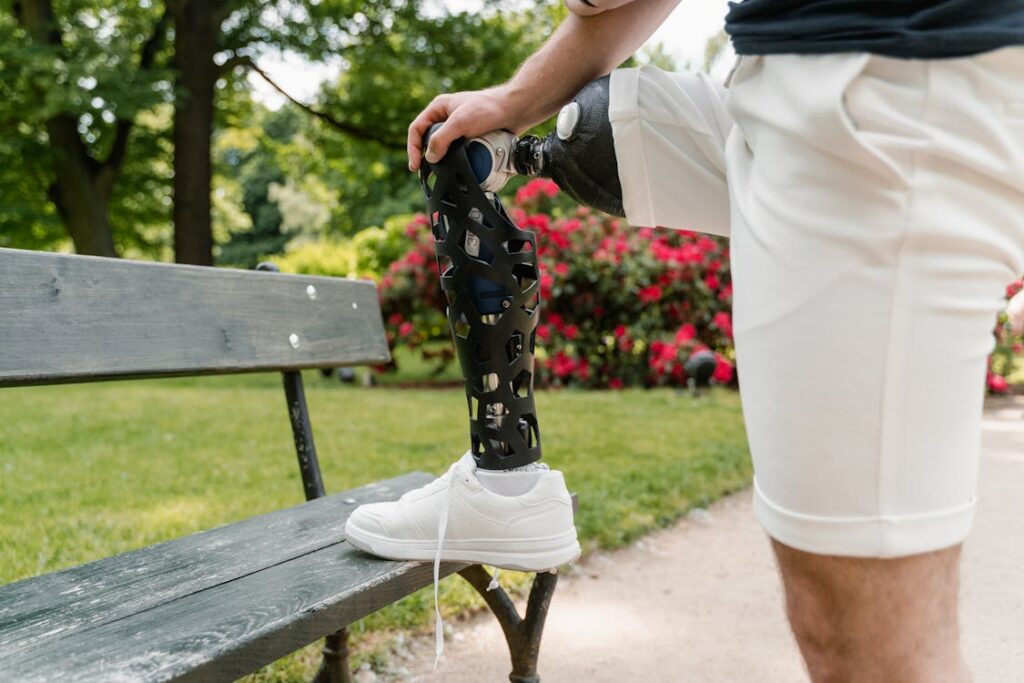
Strengthening the Body for Symmetry and Endurance
Improving how far and how well you walk isn’t just about walking more. It’s also about training the parts of your body that help you move. These include your legs, hips, core, and even your feet. When these areas are strong and work in balance, your steps become smoother, lighter, and more efficient. This means you use less energy and walk longer without discomfort.
In this section, you’ll learn how to strengthen key areas in a simple, practical way. No fancy equipment. No complex routines. Just consistent movement that makes your body work better together.
Focus on the Hips and Glutes First
Your hips are the engines of your walking. Every step you take depends on your hips pushing your leg forward and your glutes (the muscles in your backside) helping you lift and stabilize. If these muscles are weak or unbalanced, walking becomes harder and more tiring.
To strengthen them, start with basic exercises like standing leg lifts. Stand upright and slowly lift one leg straight back without bending your knee. Hold for a few seconds, then lower. This wakes up the glutes and builds balance. Do the same movement to the side to target your hip stabilizers.
Another great move is the glute bridge. Lie on your back with your knees bent and feet flat on the ground. Slowly lift your hips upward, squeeze your glutes, hold for a few seconds, then lower back down. This simple move strengthens your lower back, glutes, and core all at once.
Strengthen the Core for Better Control
Your core isn’t just your stomach. It includes all the muscles around your middle — your back, sides, and even your hips. A strong core keeps your posture upright and helps your legs move more efficiently. It also reduces the wobble that wastes energy and can lead to pain.
You don’t need to do sit-ups. Instead, try holding a plank. Start by lying face down, then lift yourself up on your elbows and toes, keeping your body in a straight line. Even 10 to 15 seconds is a great start. Gradually increase the time as you get stronger.
You can also work your core while sitting. Sit tall in a chair, without leaning back. Pull your belly button in slightly toward your spine, hold for a few seconds, and then release. This tiny motion strengthens your deep core muscles and can be done anywhere.
Train Your Legs for Power and Balance
Your legs are the tools that move you forward, so it’s important they’re strong and evenly trained. Squats are one of the best exercises you can do — but you don’t need to go deep or heavy. A simple chair squat works just as well. Stand in front of a chair, lower yourself down as if to sit, then stand back up. Make sure both legs are doing equal work.
Another great option is the step-up. Use a low step or staircase. Step up with one foot, then bring the other foot up to meet it. Step back down the same way. Do this slowly and with control. It helps build strength, balance, and coordination — all key for symmetry.
If one leg feels weaker, give it extra attention. Train it more gently and slowly, but don’t ignore it. Over time, it will catch up.
Don’t Forget the Ankles and Feet
Your ankles and feet are your connection to the ground. If they’re weak or stiff, your body has to work harder with every step. Improving their strength and flexibility can make a big difference in endurance and symmetry.
Ankle circles are a great start. Sit or lie down, lift one foot off the ground, and slowly rotate it in circles in both directions. Then switch feet. This keeps the joint loose and strong.
To strengthen your feet, try towel scrunches. Place a towel on the floor and use your toes to pull it toward you. This trains the small muscles in your feet that help with balance and push-off during walking.
Balance Exercises for Smooth, Even Walking
Balance is often overlooked, but it’s essential for symmetry. If you wobble or shift your weight unevenly as you walk, your muscles get tired faster. Practicing balance helps your body stay aligned and reduces the effort needed to move forward.
Try standing on one foot. Hold onto a wall or chair at first if needed. Start with 10 seconds and build up over time. Switch legs to make sure both sides get equal work. As you improve, try closing your eyes or standing on a soft surface to make it more challenging.
Another great option is the heel-to-toe walk. Place one foot directly in front of the other as if you’re walking on a tightrope. This trains your balance, strengthens your legs, and encourages a more aligned gait.
Stretching: The Missing Link
Muscle tightness can pull your body out of alignment. For example, tight hip flexors can tilt your pelvis forward, tight calves can mess with your foot strike, and tight hamstrings can limit your stride. All of this affects how long and well you can walk.
Stretching doesn’t need to be complicated. A few minutes each day is enough. Focus on the hips, hamstrings, calves, and lower back. Hold each stretch gently — never bounce — and breathe deeply. The goal isn’t to force your body but to invite more space and softness into your muscles.
Flexibility supports symmetry. And when both sides of your body can move freely and evenly, walking becomes smoother and less tiring.
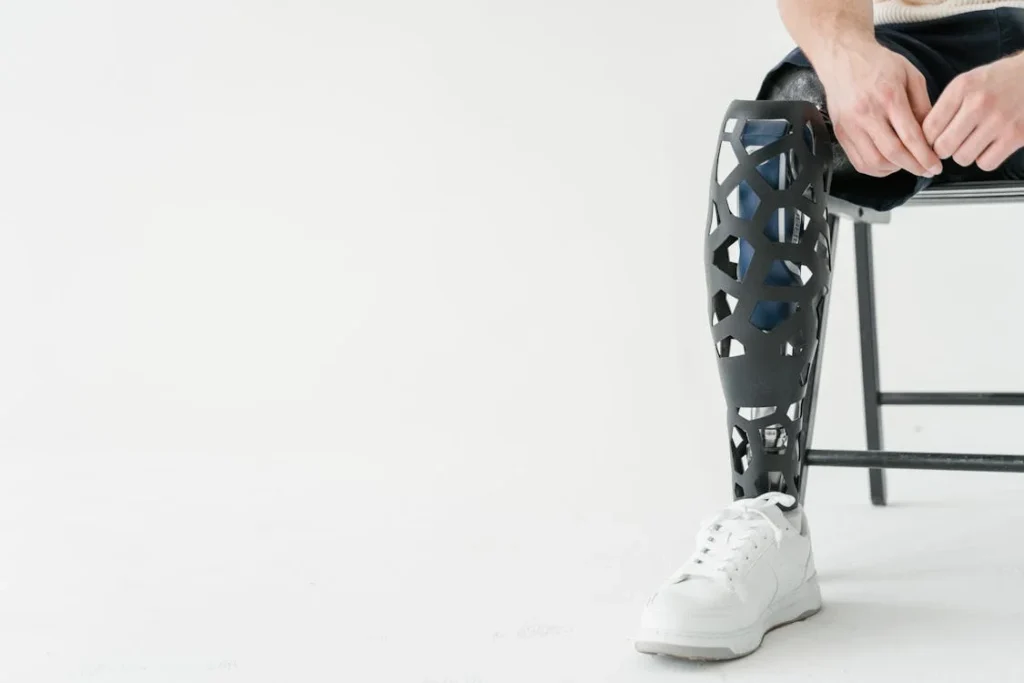
How to Track Progress and Stay Motivated Over Time
Improving walking endurance and symmetry is not a one-day task — it’s a journey. And like any journey, it’s easier and more rewarding when you can see how far you’ve come. Tracking your progress helps you stay focused, keeps your motivation high, and shows you that your small, daily steps are adding up.
This section will guide you on how to set simple goals, track your improvement without pressure, and stay committed even on days when you feel stuck or tired.
Start With a Baseline
Before you begin working on your endurance, take note of where you are now. You don’t need anything fancy. Just a simple record of how long you can walk comfortably, how far you can go without pain, or how your body feels during and after a walk.
You could use a notebook, a phone app, or just a piece of paper. For example, write down: “Walked for 10 minutes. Felt tired in my right leg after 7 minutes. Needed to rest after.” These little details help you understand your current level. They also give you something to look back on — which is very motivating once you start seeing change.
Set Small, Clear Goals
Many people get stuck because they set goals that are too big or too vague. Instead of saying, “I want to walk more,” try something specific like, “I want to walk 15 minutes without stopping,” or “I want both legs to feel equally strong by the end of a walk.”
Start small. Once you reach that goal, set a new one. The goal should be just enough to challenge you, but not so much that it feels impossible. If you walk for 10 minutes today, try for 11 minutes next week. These tiny wins build momentum and confidence.
Notice Changes Beyond Just Time or Distance
Progress doesn’t always mean walking farther. It can also mean walking the same distance with better posture. Feeling less tired. Having less pain. Walking with more control or balance. All of these are signs you’re getting stronger and more symmetrical.
After each walk, ask yourself:
- Did I feel steady throughout?
- Was one side doing more work than the other?
- How was my breathing?
- Did I enjoy the walk more than last time?
Noticing these subtle changes keeps you engaged and helps you understand your body better.
Take Photos or Videos
This is one of the most powerful tools, especially for noticing symmetry. Ask someone to take a short video of you walking, or set your phone on a stand. Watch how your feet land. Notice your arm swing, your posture, and whether your hips or shoulders move evenly.
Do this again a few weeks later. You’ll likely notice improvements — even small ones. Maybe your foot lands more straight. Maybe your back looks more upright. These visual clues can be very encouraging and show progress you might not feel yet.
Use Gentle Reminders to Stay Consistent
No matter how motivated you are in the beginning, there will be days when walking feels hard or boring. That’s normal. The key is to make walking a natural part of your routine so that even on low-energy days, you still show up.
Set a reminder on your phone. Put a note on your door. Pair your walk with something enjoyable — a favorite podcast, music, or a quiet street you like. These small tricks help your brain associate walking with something pleasant and easy.
Celebrate the Wins — Big and Small
Improvement doesn’t always feel fast. That’s why it’s important to celebrate all the wins, not just the big ones. Did you walk one minute longer? That’s a win. Did you finish a walk with more energy than last time? Another win. Did both legs feel equally strong for the first time? That’s huge.
You don’t need to throw a party. Just take a moment to recognize what you did and feel proud. Positive feelings build habits. When walking feels rewarding, you’ll want to do it again.
Adjust When Life Changes
There will be times when you’re tired, busy, or sick. Your progress might slow down. You might miss a few days. That’s okay. Life is not perfect, and neither is progress.
The goal is not to never miss a day. The goal is to keep coming back.
If you’re having a tough week, shorten your walk. Focus on posture instead of distance. Do some simple strength or balance work indoors. The point is to stay connected to your body — even if it’s just for a few minutes.
Lean on a Support System
Walking doesn’t have to be a solo mission. If you walk with a friend, join a local walking group, or even share your progress with a family member, you’ll likely stay more committed. Talking about your goals out loud helps turn them into real plans.
And on the days when you feel off track, having someone to encourage you — or just remind you why you started — can make all the difference.
Trust the Process
Improving endurance and symmetry is not about speed. It’s about consistency. The changes may feel slow, but they are real and lasting. Every walk strengthens not just your muscles, but your confidence and control. Your body is learning. Every step counts.
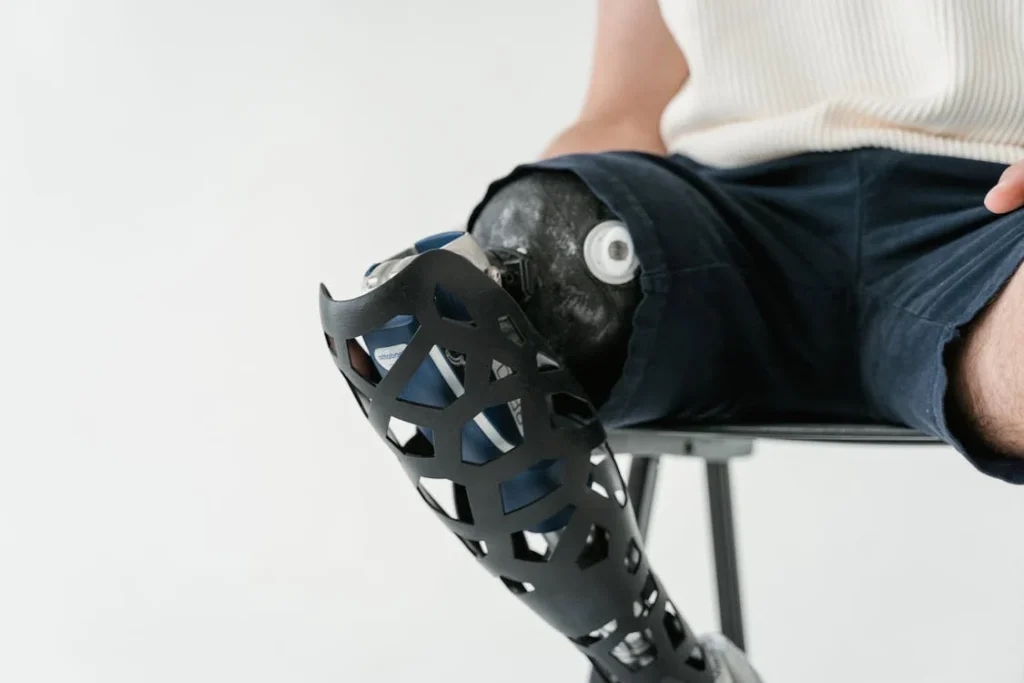
Bringing It All Together: A Lifelong Path to Stronger, Balanced Walking
As you reach the end of this guide, it’s time to pull together everything you’ve learned. Building walking endurance and improving body symmetry isn’t just about getting through a checklist. It’s about building a relationship with your body — understanding how it moves, what it needs, and how to help it perform at its best.
At Robobionics, we’ve seen firsthand how small, daily steps can transform lives. We work with people from all walks of life — some using prosthetics, some recovering from injuries, and others simply trying to feel strong and stable in their own bodies. The truth is, no matter where you’re starting from, your body has the ability to improve. And that journey begins with awareness, patience, and consistent care.
Your Body Is Always Changing
Our bodies are not fixed. Muscles grow, joints loosen, balance improves. But these things don’t happen by accident — they happen through steady practice. That’s why even a short walk today matters. It’s not just movement; it’s a message to your body: “I’m here. I’m working with you. Let’s grow together.”
The journey doesn’t need to be intense or complicated. It just needs to be consistent. A 15-minute walk, a few standing leg lifts, a moment of focused posture — these are the seeds of real change. Over time, they build strength, reduce effort, and make walking feel natural and enjoyable.
Make Walking a Habit, Not a Task
The biggest shift happens not in your legs, but in your mindset. When walking becomes something you get to do — instead of something you have to do — everything becomes easier. The resistance fades. The excuses shrink. And suddenly, walking becomes a part of your life you look forward to.
To get there, make walking fit your lifestyle. Maybe you walk your dog each morning. Or stroll while listening to an audiobook. Or take a short break walk during work. These simple routines help walking become effortless — something that doesn’t drain you, but refuels you.
When it feels good, it becomes part of your rhythm. And that’s when you see the biggest changes.
Keep Checking In With Your Body
Even as you improve, it’s important to keep listening to your body. Are you still walking with good form? Are both legs doing equal work? Are you maintaining strength and flexibility?
The body gives us signs all the time — a little tightness here, a little ache there. When you catch these early, you can adjust gently before they become problems. A regular check-in keeps you balanced, comfortable, and confident in your movement.
If you use a prosthetic or brace, get regular adjustments. A well-aligned device makes a huge difference in energy and symmetry. Never ignore even slight discomfort — your comfort matters.
Be Proud of Every Step
It’s easy to underestimate walking. Because it’s simple, we often don’t treat it like the powerful tool it is. But walking is one of the most natural, healing forms of movement we have. It strengthens the heart. It clears the mind. It connects us with the world.
Every time you choose to walk — even when you could skip it — you’re making an investment in your well-being. And every time you finish a walk, you’ve done something meaningful.
So take pride in your effort. In your growth. In your commitment to keep moving, even when it’s hard.
Conclusion
Walking is one of the simplest things we do — but when done with balance and strength, it becomes a powerful tool for better health and confidence. Improving endurance and symmetry isn’t about perfection. It’s about small, consistent actions that help your body move more freely and comfortably every day.
Whether you’re starting fresh, coming back from a setback, or simply aiming to walk longer without fatigue, remember this: progress comes from patience, not pressure. Each step you take with awareness builds strength. Each moment of good posture adds up. Every short walk matters.
At Robobionics, we know that movement changes lives. Whether with your own limbs or with a prosthetic, your potential for growth is real. You don’t need to rush. Just keep moving forward — one steady, balanced step at a time.
Your walk is your path. Own it. Strengthen it. And enjoy every step.



